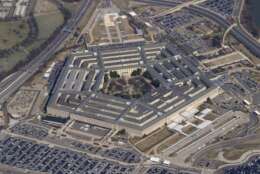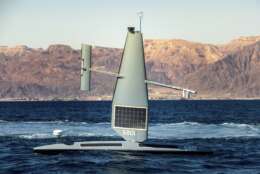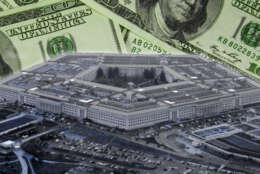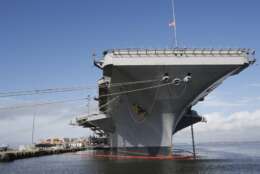Navy
-
Only a couple of shipyards in the United States can build Navy ships. Hundreds of small shipyards, though, build important pieces of the country's at-home infrastructure: barges, ferries, tugboats.
May 09, 2023 -
Last week, the Senate Armed Services Committee (SASC) heard testimony, regarding a so-called "revolving door" between the Pentagon and companies to which it awards contracts. The SASC's Personnel Subcommittee presented a report from Sen. Elizabeth Warren (D-Mass.) on the topic.
May 02, 2023 -
Five architectural firms are now at work on proposals for a brand new museum for the Navy. To learn more about why the Navy will build a new museum, as well as to hear about the Navy's vision for the new facility.
May 01, 2023 -
The Navy's expansion of unmanned systems follows experimentation work it's been conducting in the Middle East, where it's combined drones with sensors connected together in a resilient mesh network.
April 05, 2023 -
The Defense Department wants to expand its budget for mental health care, and the services are starting new programs to prevent harmful behavior.
March 31, 2023 -
The Promise to Address Comprehensive Toxics Act — the PACT Act — became law a few months ago. It brought an expansion of services available to veterans and drew more veterans into eligibility.
March 23, 2023 -
Pentagon heads look to pair acquisition and technology to advance their future capabilities.
March 17, 2023 -
The Department of the Navy pushed out Tom Sasala, the department’s highly-respected CDO since October 2019, leaving it without defined leadership and potentially overwhelming its data organization.
February 22, 2023 -
The small but potent Defense Innovation Unit (DIU) has reached its stride, as it enters its eighth year in business. The DIU uses a technique known as "other transaction authority" to quickly get new technology prototypes built for military purposes.
February 21, 2023 -
Aaron Weis, the Department of the Navy’s chief information officer, wrote to staff that his last day is March 17.
February 21, 2023 -
For the military, nothing much happens without good requirements. Vic Steinman is the air warfare requirements coordinator for the Navy. His work earned him a Defense Acquisition Workforce Award.
February 06, 2023 -
Navy ships are getting fewer steaming hours because of growing maintenance delays and costs, a troubling trend that comes as at time when the U.S. is struggling to keep pace with China’s growing fleet. Operating and support costs grew by about $2.5 billion across 10 ship classes while the number of propulsion hours in which ships were operating or training dipped during a 10-year period that ended in 2021. That is according to a report by the Government Accountability Office. The Navy saw increased maintenance delays, breakdowns and cannibalization of parts — moving them from one ship to keep another one going — during the period.
February 03, 2023 -
In today's Federal Newscast, a Hawaiian company will help the Navy find community-based solutions to reuse the Red Hill fuel storage facility on Oahu.
February 02, 2023 -
FEMA brings back a familiar face to be its new CIO while HHS, the Navy and GSA fill key technology leadership roles.
February 01, 2023 -
For various reasons, defense contractors have quite a bit of Defense Department property in their possession. But DoD can only guesstimate how much it's all worth.
February 01, 2023
















